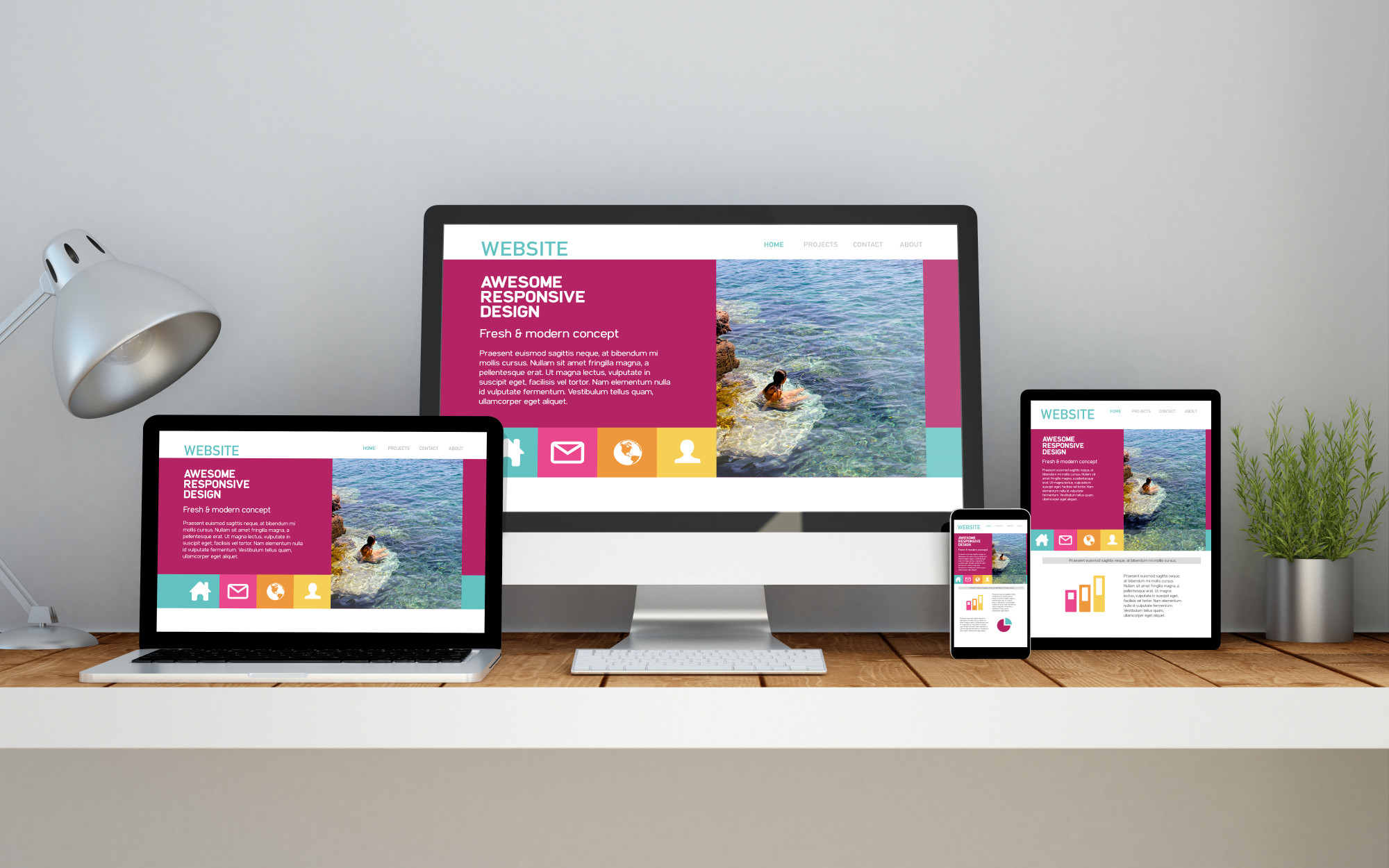Just how to Maximize Your Website's Efficiency with Advanced Web Design Techniques
Just how to Maximize Your Website's Efficiency with Advanced Web Design Techniques
Blog Article
Trick Factors To Consider to Remember When Creating a Modern Website Design That Aligns With Present Trends
In the ever-evolving landscape of web design, it is important to take into consideration numerous pivotal elements that not only mirror present trends however additionally enhance user engagement. A receptive layout is vital, guaranteeing that customers experience seamless functionality throughout various tools. Prioritizing user experience via user-friendly navigation and aesthetic charm can not be forgotten.
Responsive Design Concepts
In the ever-evolving landscape of web style, the execution of receptive design principles stands as a basic demand for producing user-friendly websites. Receptive layout makes sure that web pages make well on a variety of gadgets, from desktops to smart devices and tablets. This versatility is accomplished via fluid grids, versatile photos, and media queries, which collectively permit a solitary site to supply an optimal viewing experience across varied systems.
The core of responsive design depends on its ability to readjust layout and material based upon the individual's display dimension and orientation. By employing relative units like percentages rather than repaired units like pixels, designers can create scalable layouts that preserve aesthetic stability. Furthermore, using media questions allows for the application of different designs relying on the characteristics of the gadget, facilitating customized experiences that boost functionality.
Additionally, receptive style is not merely a technical factor to consider; it is critical in fitting the boosting use mobile devices for internet surfing. As customer expectations develop, ensuring accessibility and capability throughout all platforms becomes crucial for keeping involvement and satisfaction. Hence, accepting responsive layout concepts is vital for modern internet advancement, cultivating inclusivity and future-proofing digital content.
Focus on User Experience
Customer experience (UX) has arised as a central emphasis in contemporary website design, enhancing the principles of receptive style by focusing on just how customers communicate with web sites. A properly designed UX can significantly influence user fulfillment, engagement, and retention, emphasizing the need for developers to create satisfying and intuitive experiences.
Trick components of reliable UX layout include usability, functionality, and looks. Internet sites must be very easy to browse, making sure users can find the information they seek without confusion.

Moreover, incorporating individual comments right into the layout procedure is necessary - web design. Performing usability testing and gathering insights from genuine customers can provide valuable information to fine-tune the style and address discomfort factors. Inevitably, a solid focus on individual experience will help create sites that resonate with site visitors, fostering loyalty and driving conversions
Significance of Access
Availability is a basic aspect of modern website design, guaranteeing that all individuals, no matter of their handicaps or capacities, can browse and communicate with electronic web content efficiently. As the net becomes increasingly integral to day-to-day live, it is necessary that internet sites are comprehensive, accommodating a diverse target market that consists of people with aesthetic, auditory, cognitive, and motor problems.
Applying access features not only sticks to lawful needs, such as the Americans with Disabilities Act (ADA) and the Web Content Accessibility Standards (WCAG), but additionally enhances customer experience for everybody. Available designs frequently result in much better navigating, quicker loading times, and boosted seo, profiting all individuals.
Moreover, cultivating an inclusive electronic atmosphere reflects positively on a brand name's track record. Companies that prioritize accessibility show social responsibility and a commitment to equity, which can boost customer commitment and expand their market reach.

Current Aesthetic Trends
Welcoming present aesthetic fads is vital for developing aesthetically appealing and interesting internet sites that record individual focus. In today's digital landscape, minimalism remains to control, stressing clean lines, enough white area, and straightforward navigating. This method not only improves readability but additionally allows crucial web content to beam, aligning with individual expectations for simplicity and quality.
In addition, making use of bold typography is progressively popular, improving and giving a distinctive voice brand name identification. Huge, attention-grabbing typefaces can create visual power structure, guiding individuals through the content official site effectively. In addition, vibrant color schemes are recovering, allowing developers to stimulate emotions and create remarkable experiences.
Another fad is the consolidation of unbalanced designs and natural forms, which can include an element of surprise and creativity, establishing an internet site in addition to more conventional designs. In addition, the integration of immersive visuals, such as high-quality images visit this site and videos, can engage customers and convey messages much more strongly. web design.
As these visual fads evolve, it is important for web designers to stay informed and adapt their techniques, ensuring their creations remain relevant and reverberate with contemporary audiences.
Optimizing for Performance
While visual factors to consider play a significant duty in attracting customers, optimizing for efficiency is similarly vital to guarantee a smooth surfing experience. A properly designed site needs to fill swiftly and respond quickly to individual communications, as hold-ups can result in irritation and boosted bounce rates.
To attain optimum efficiency, developers should focus on lessening data sizes by pressing pictures and using effective coding methods (web design). Executing lazy loading methods can also boost speed by postponing the loading of non-essential resources until they are required. Additionally, leveraging Web content Delivery Networks (CDNs) can disperse fixed assets more detailed to individuals, reducing latency
Additionally, it is necessary to use modern web modern technologies such as HTML5 and CSS3, which not only boost efficiency however also improve compatibility throughout various gadgets get more and internet browsers. Consistently keeping an eye on website speed making use of tools like Google PageSpeed Insights can offer important understandings right into areas for enhancement.

Conclusion
In conclusion, modern web style demands a diverse approach that incorporates receptive layout concepts, an emphasis on individual experience, and stringent adherence to access criteria. Jointly, these considerations add to the production of a natural and impactful online presence that fulfills the varied demands of modern individuals.
In the ever-evolving landscape of web design, it is important to take into consideration numerous essential elements that not only mirror present fads however likewise enhance customer interaction. A responsive design is paramount, ensuring that customers experience seamless functionality throughout numerous tools.The core of receptive design exists in its capability to adjust layout and web content based on the individual's screen dimension and positioning.Moreover, including customer feedback right into the design procedure is vital.In final thought, modern-day web style requires a complex technique that incorporates responsive style principles, an emphasis on customer experience, and rigorous adherence to access requirements.
Report this page